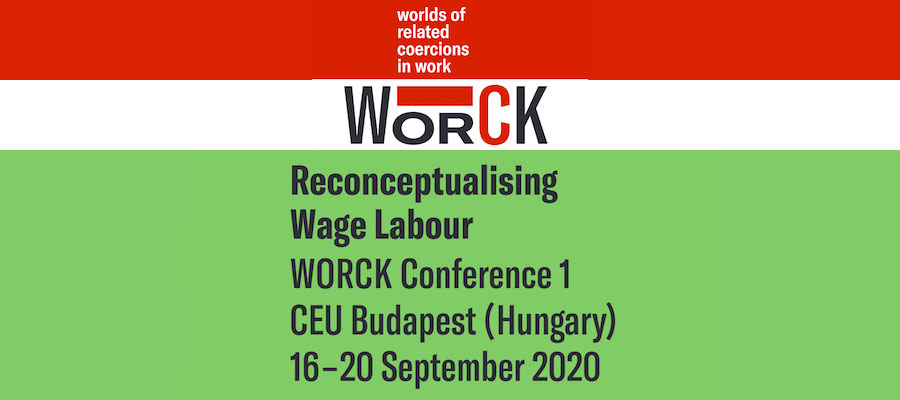Reconceptualising Wage Labour, 1st WORCK Conference, Central European University, Budapest, September 16–20, 2020
The newly started EU COST-action Worlds of Related Coercions in Work (WORCK) will host its first annual conference at the Central European University in Budapest from 16–20 September 2020. The network aims at exploring interconnected histories of labour and coercion.
One of the defining features of global labour history has been the insistence on looking beyond wage labour. Much scholarship has therefore been directed towards labour understood to be informal or coercive. From this vantage point, historians have argued that in a global and long-term historical perspective wage labour in a stable labour market was rarely the norm. However, in conceptualizing wage labour as an exception scholars often maintain an analytical distinction between labour relations understood to be coercive, on the one hand, and, on the other hand, wage labour which is implicitly or explicitly understood to be a form of free labour. This conference aims to move past this binary by exploring the moments and logics of labour coercion within labour relations mediated by remuneration (of all kinds) and/or contracts (of all kinds) including ostensibly free labour. To this end, it also seeks to open up a discussion about whether concepts such as “hired labour” can help historians reconceptualise historical links between wage labour and labour coercion.
The conference organizers are looking for contributions that expose the ambiguities of wage and contract across history. Contributions might address coercion in diverse contexts such as:
- Ancient, medieval or early modern societies
- Peasant economies, urban markets or industrial societies
- Socialist or post-socialist societies
- The global north or the global south
- Contemporary capitalism
We invite proposals that explore labour coercion from a wide range of perspectives including but not limited to those of gender, race, and class. We also welcome proposals that explore the linguistic, spatial and temporal dimensions and hierarchies of coercion.
